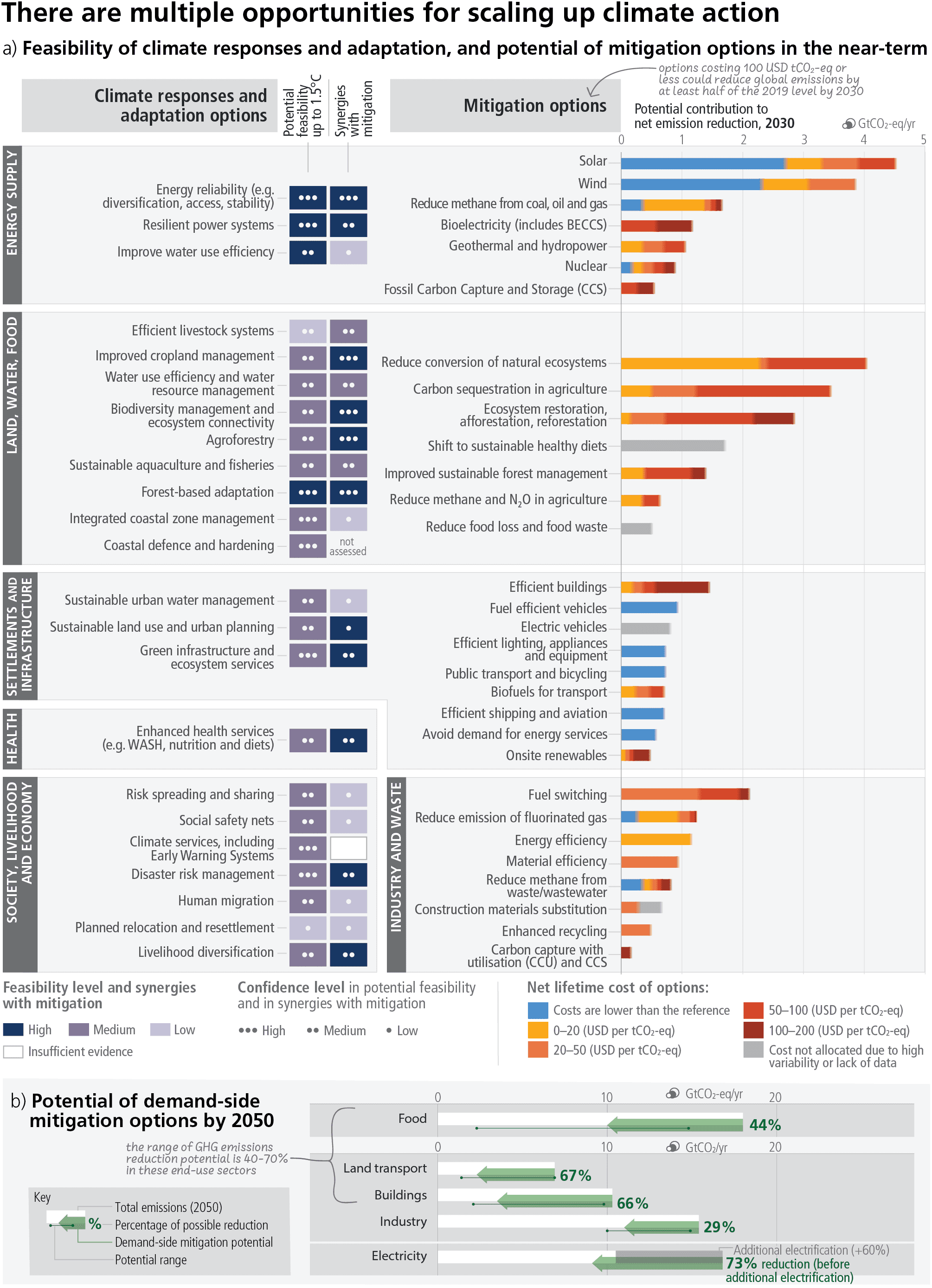IPCC Synthesis Report: the carbon removal angle
On Monday the IPCC published a Summary for Policymakers - the precursor to their full Synthesis Report. The document gathers together the findings and recommendations from six extremely comprehensive reports, covering many aspects of climate change, published over the past five years. We have been following the individual reports as they have been released and taking particular interest in data and information related to carbon removal. The summary is a useful distillation of the main points. Here are our key takeaways in relation to what we are working on at Kita:
Carbon removal is an essential element of any strategy for climate change mitigation
Though emission reduction and omission remain paramount and there are, according to the report “multiple, feasible and effective options to reduce greenhouse gas emissions”, this is not enough to guarantee a significant effect on the problems we are facing. Carbon removal should form part of the solution.
The IPCC have reiterated that Carbon Dioxide Removal (CDR) is a requirement for most global modelled mitigation pathways. CDR will be particularly necessary if there is a temperature overshoot, over 1.5 degrees Celsius. The report clarifies that most pathways, where global warming is limited to 1.5 degrees C by 2100, will involve a temporary temperature overshoot, at some stage. Therefore, CDR development is vital for the fight against global warming.
Necessity of high quality projects
The report highlights the fact that certain types of CDR (including reforestation, IFM, soil carbon, peatland restoration and blue carbon) have significant co-benefits. Therefore, the introduction of high quality CDR projects will not only contribute to mitigating global warming, but also benefit the ecosystem and local community.
In juxtaposition, the report simultaneously draws attention to some of the socio-economic and environmental risks associated with large scale CDR deployment. For example, afforestation can have adverse impacts on food security or local livelihoods. This reiterates the need for high quality projects, which value not only the carbon removal element of the project, but also the wider sustainability impacts.
At Kita, we are introducing carbon insurance products to increase investment into high quality carbon removal projects. As part of our assessment of ‘high quality’, we take into account all elements of the project, including the work on wider sustainability goals. As reiterated by the IPCC, introduction of CDR, particularly on a large scale, must take place in a sustainable way.
Speed is of the essence – we need to act now
The press release that accompanies the report leads with the title: “Urgent climate action can secure a liveable future for all”. The charts and diagrams included in the report clearly depict how each year that passes without effective action against climate change is exponentially impacting the world we live in.
Furthermore, the report highlights that a temperature overshoot, even if it is only temporary, will have adverse and sometimes irreversible effects. For example, a period of overshoot could weaken natural land carbon sinks and increase the release of GHGs. This in turn will reduce the impact of CDR going forward. Therefore, if we can act now to mitigate climate change, via emissions reductions and scaling of CDR, we may be able to limit the extent of an overshoot event and/or reduce the timeframe of an overshoot period.
From a carbon removal angle, we need more projects developed more quickly. This is an area where insurance can act as a catalyst for finance: reducing risk to investors by transferring that risk to a third party (the insurer), leads to fewer obstacles to investment and therefore projects can scale faster. This is the precise niche that Kita identified and where we are working to make a real difference. We see ourselves as enablers: giving investors the confidence to act now and direct serious global capital towards carbon projects that will achieve sizeable, climate-positive reductions in atmospheric carbon dioxide.
Upfront investment is essential
Finally, the IPCC directly references the need for up-front investment and access to finance, in order to accelerate climate action: “Near-term actions involve high up-front investments and potentially disruptive changes that can be lessened by a range of enabling policies (high confidence)”. The report states that finance can originate from a range of sources and via different forms, including risk insurance.
At Kita, we recognise the need for investment into CDR projects, particularly at an early stage. Therefore, we are creating carbon insurance products that de-risk the up-front financing of CDR solutions and unlock the necessary investment for CDR to scale. The IPCC have commented that ‘total mitigation investments (public, private, domestic and international) would need to increase across all sections and regions’. Kita’s carbon insurance products have the potential to unlock considerable investment.
Fear breeds inaction
OK, this isn’t something that is explicitly referred to by the IPCC. But we have seen the fear-inducing headlines that came out on Monday about the report findings. It’s enough to make individuals and organisations feel like this is a hopeless cause. And we are definitely not blinkered to the severity and seriousness of the issue we are facing.
However, we are solution-focused. We are lucky to be part of a tide of innovative, ambitious companies and organisations with proven, impactful products and services that have the potential to vastly improve the outlook. We need to highlight the possibilities and the potential of the solutions we are working on and we need to find a way to amplify the fact that alongside the urgency of emission reduction, we also need to be investing in the carbon removal sector. This “twin targets” approach will mean that emissions reductions are working in tandem with carbon removal to effect the greatest possible impact.
“This Synthesis Report underscores the urgency of taking more ambitious action and shows that, if we act now, we can still secure a liveable sustainable future for all.”
- IPCC Chair Hoesung Lee



